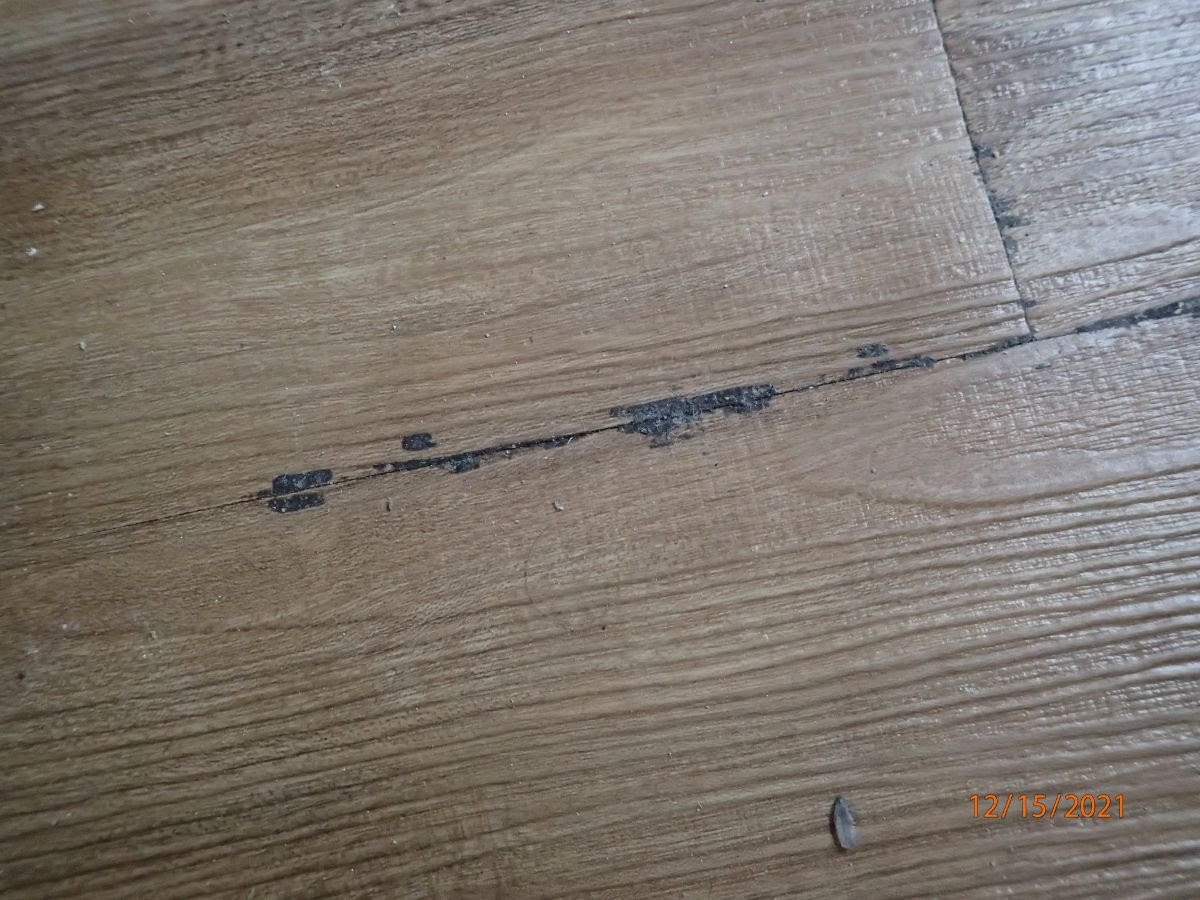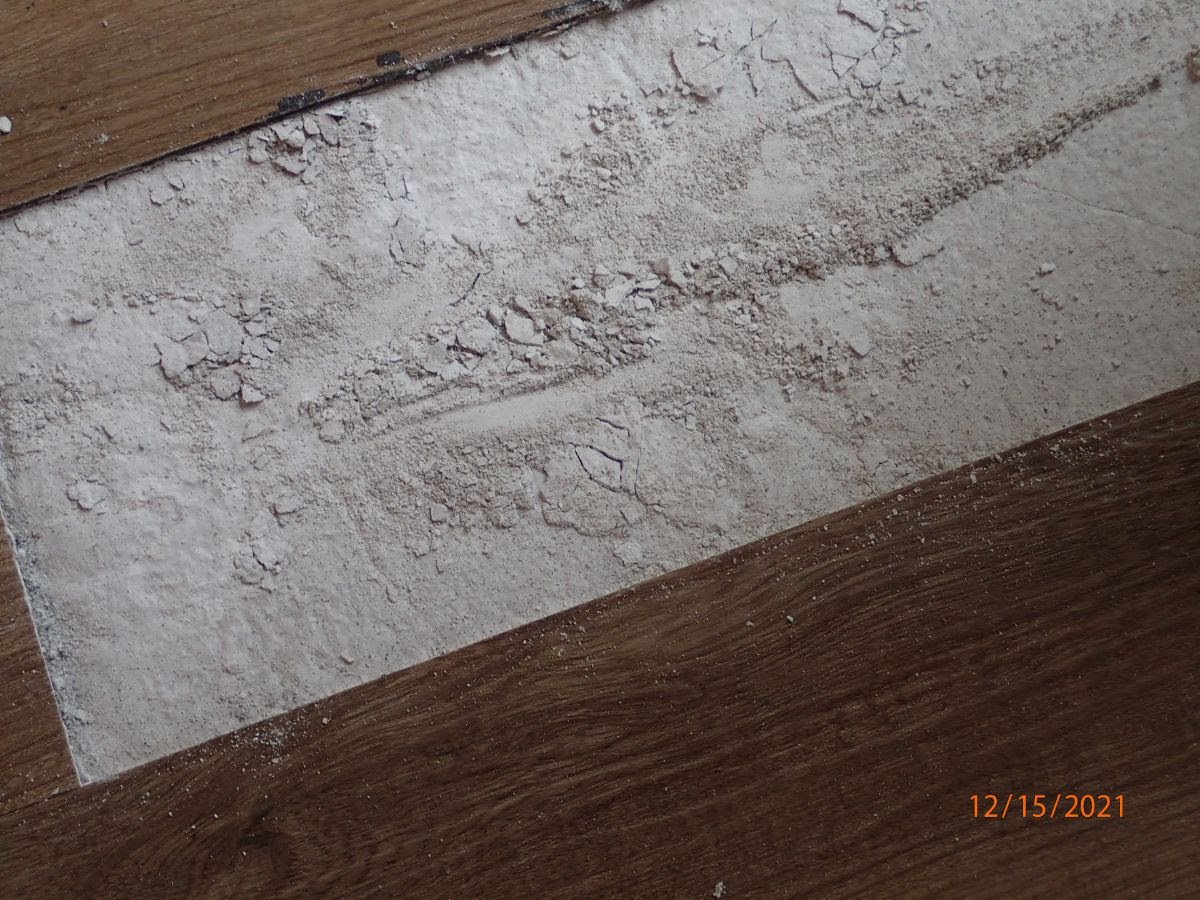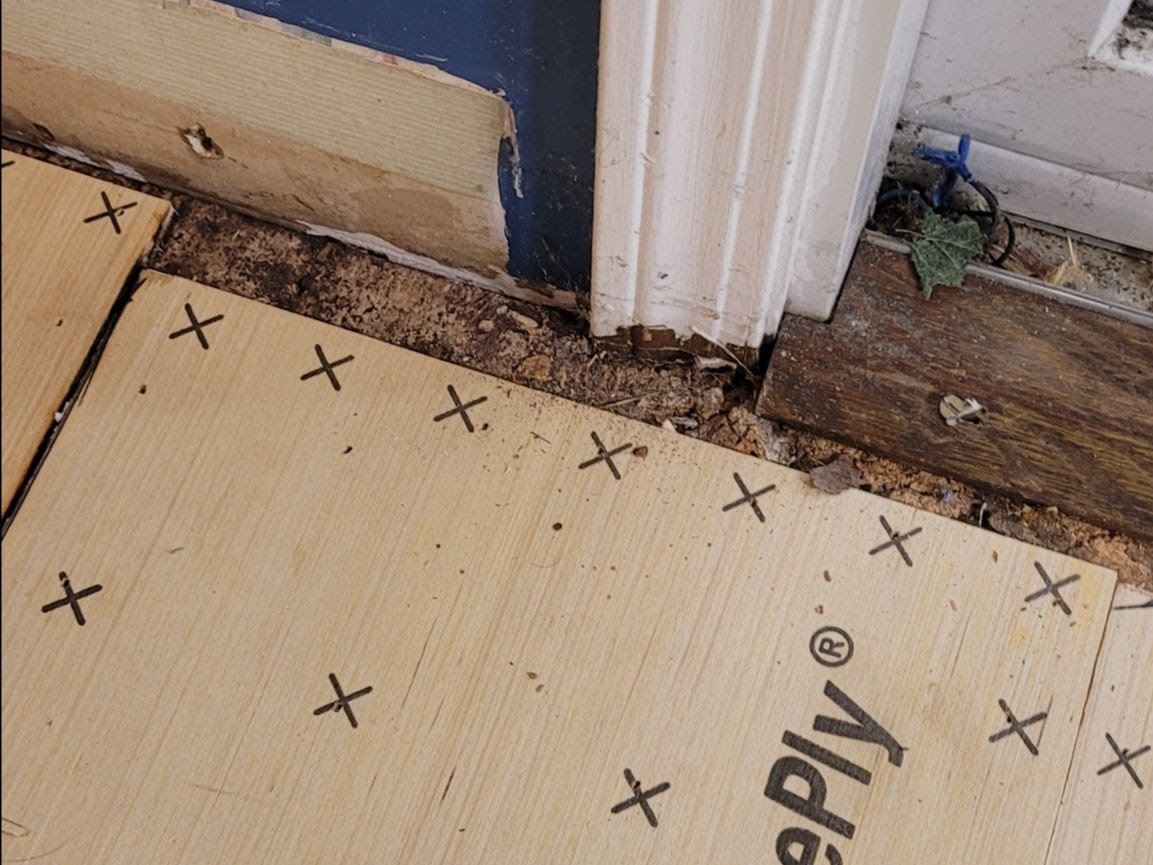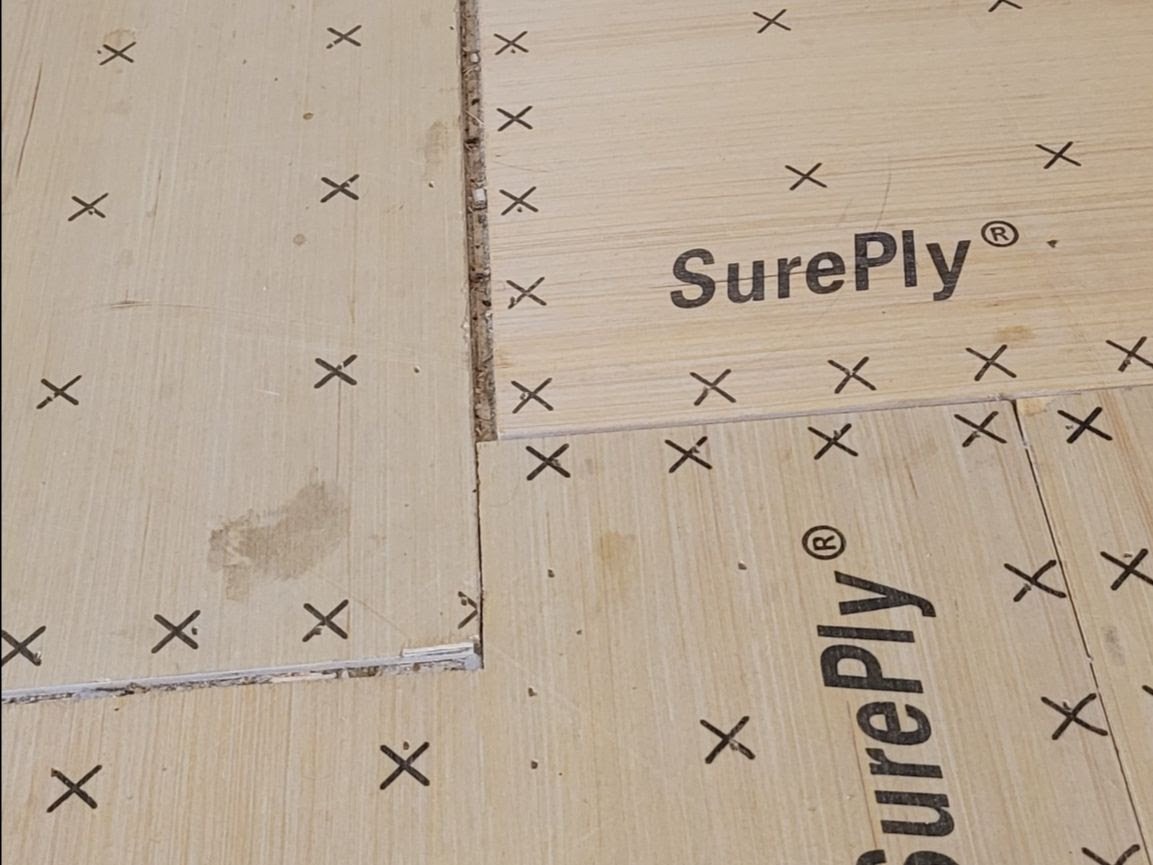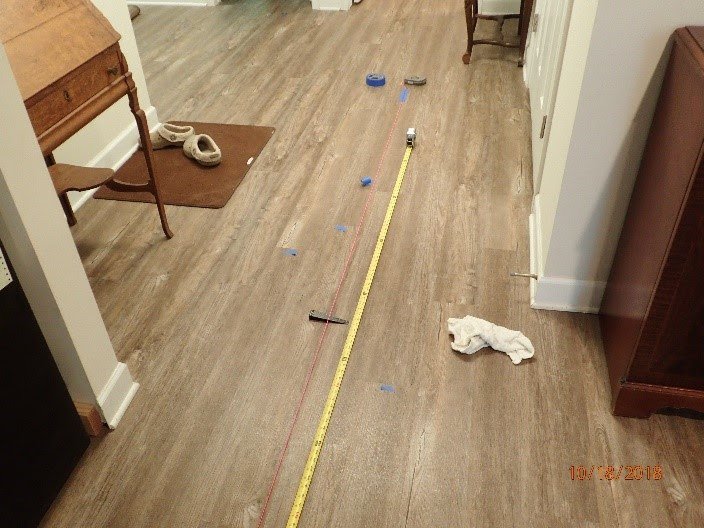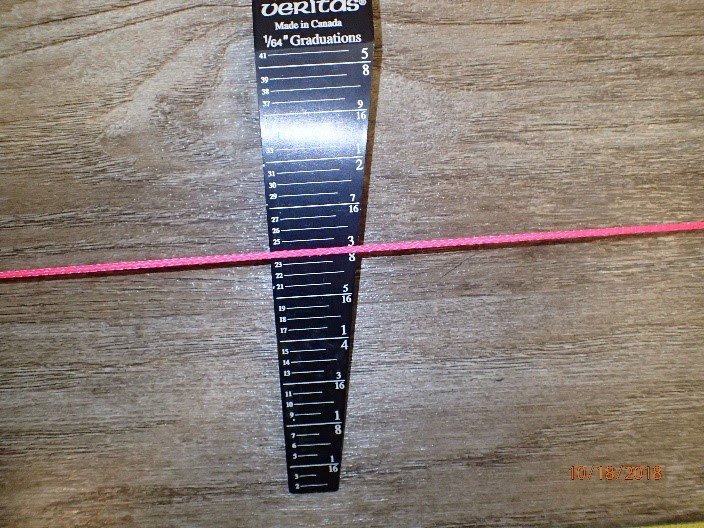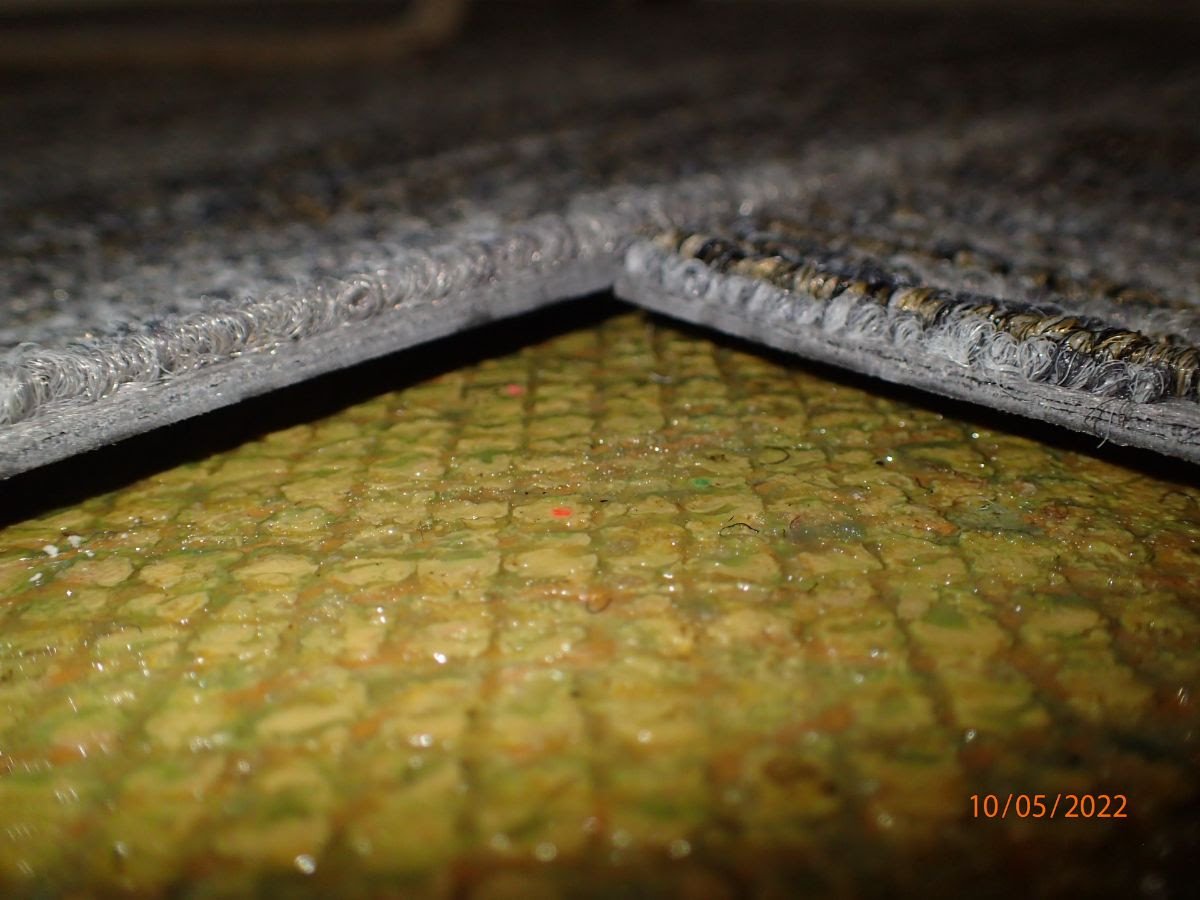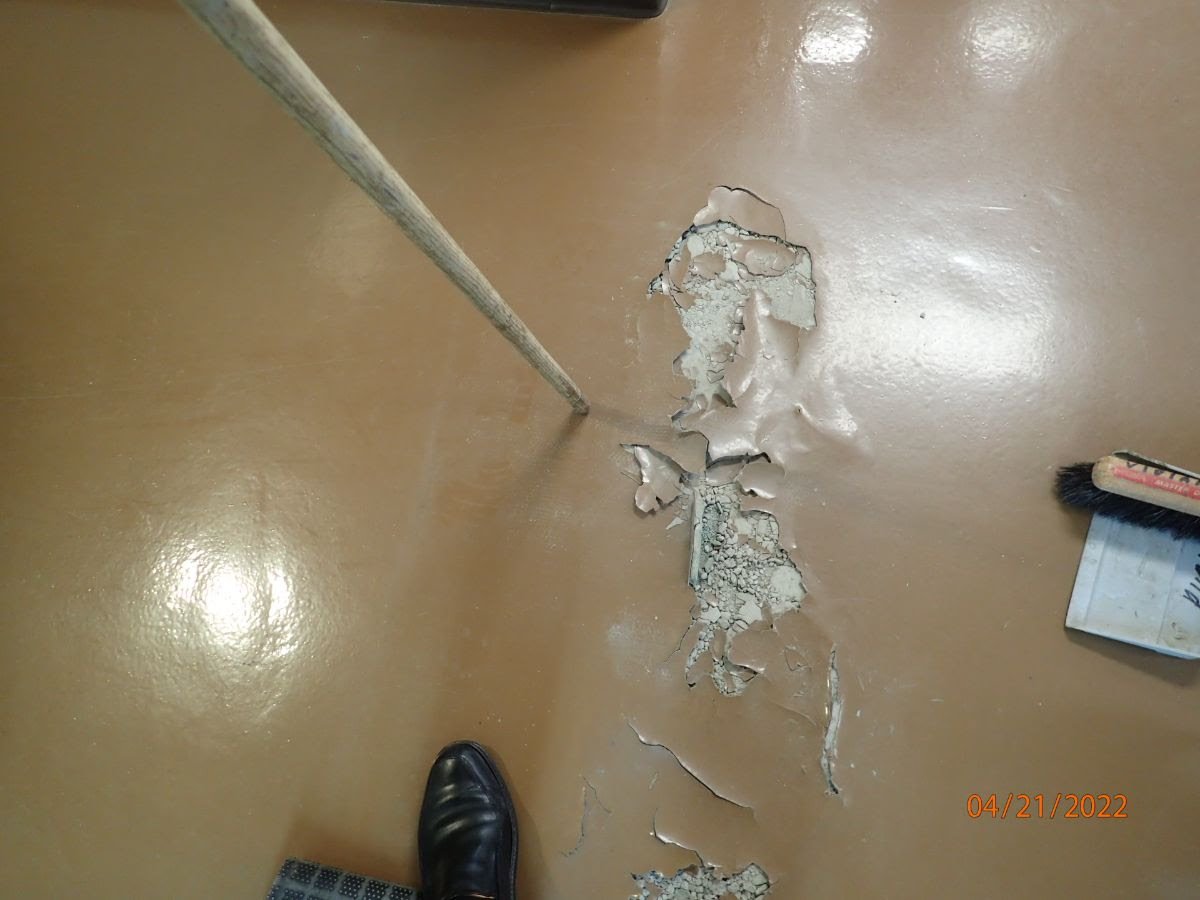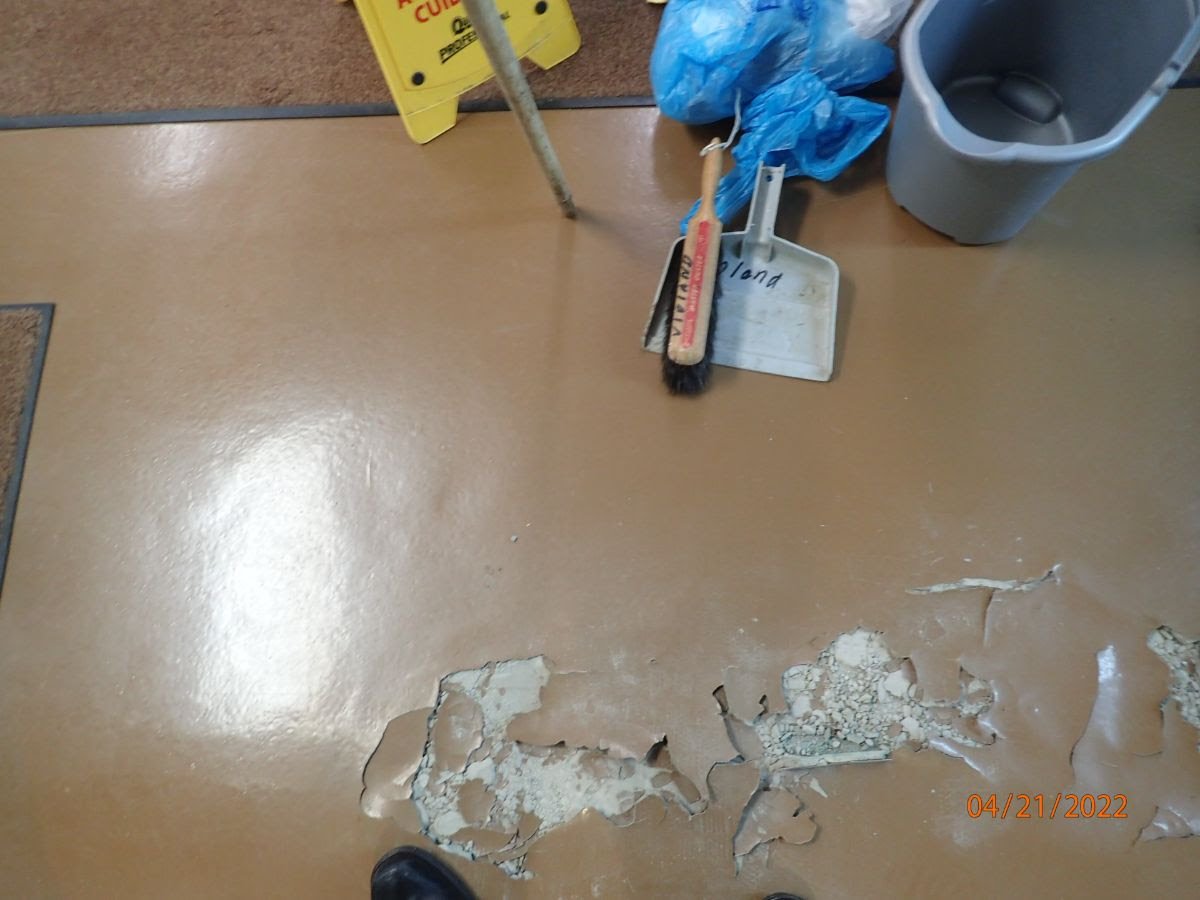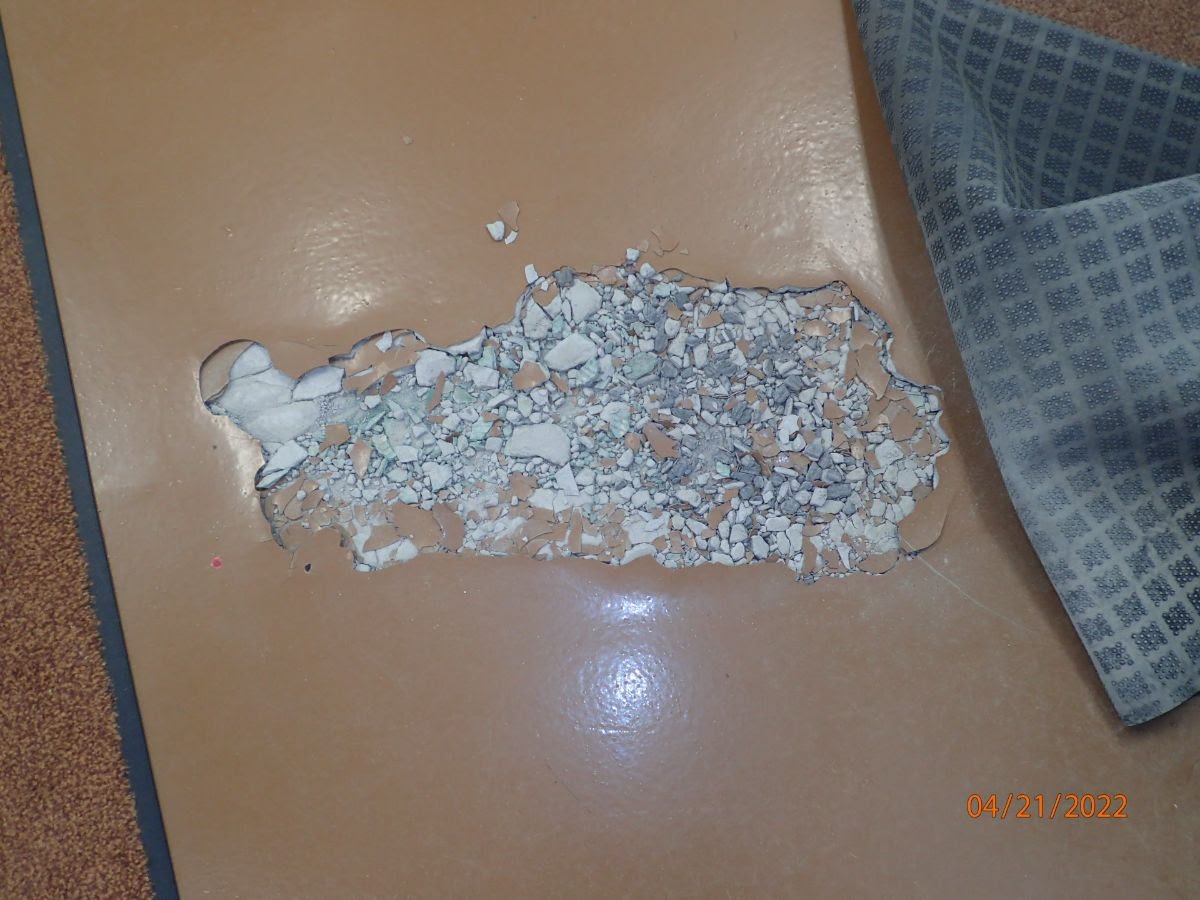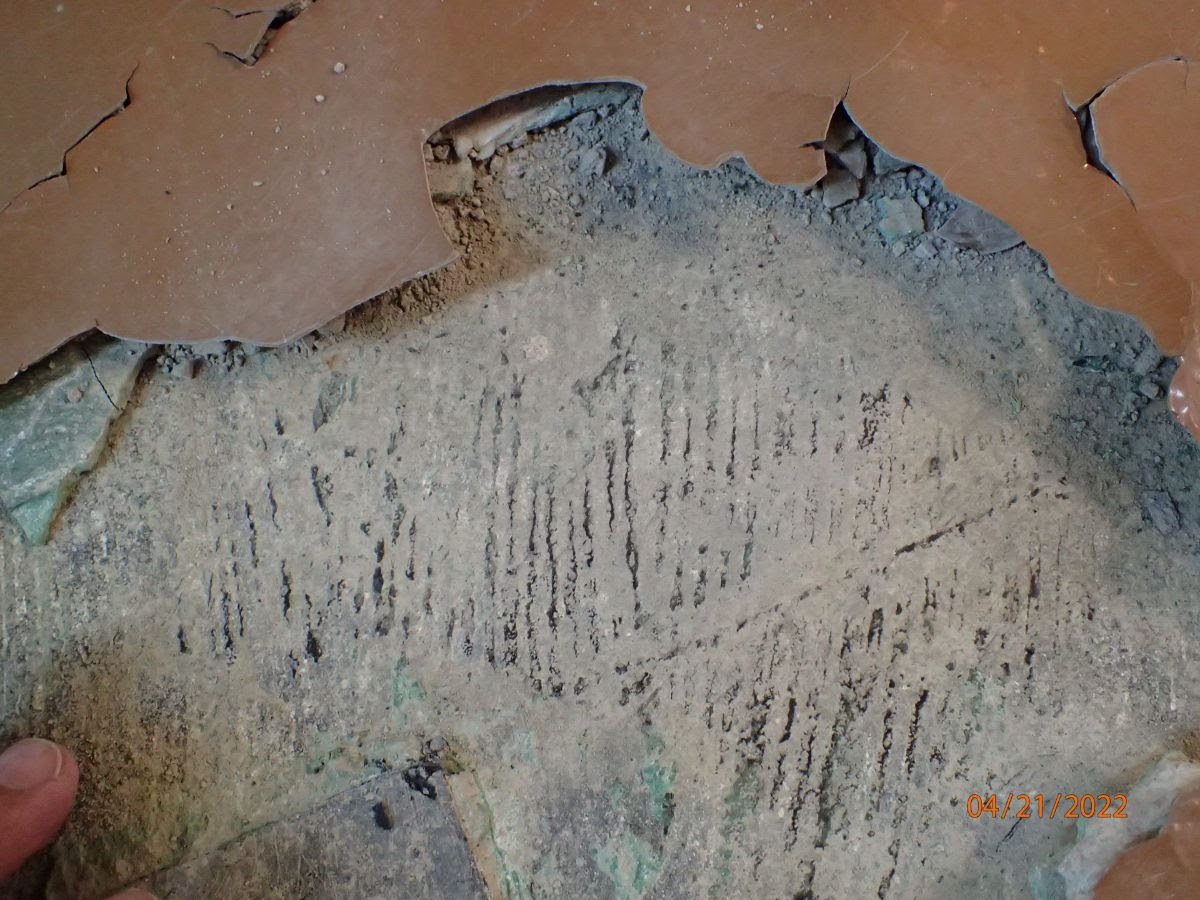Floor prep – is it really that important?
I get asked weekly, if not daily – how good does the floor underneath have to be? For most hard surface floors like luxury vinyl, flat to 3/16 inch in 10 feet. Carpet and sheet vinyl don’t usually care how flat the floor is. But if the floor isn’t smooth, you can feel it under the carpet and see it under the vinyl. I still remember inspecting a wood look sheet vinyl floor that was installed directly over a 2-1/4 inch wide, strip wood floor. You could see the boards from the wood floor through the sheet vinyl – a condition known as telegraphing. It was a nice installation that would have been really great if they had skim coated the floor first. Telegraphing can also happen when the old adhesive hasn’t been removed. While this can also cause other issues I’ll discuss later, it can also be unsightly, transferring through the new floor installed over it. Floor prep is the necessary hard work that will give your installation a better appearance and longer life.
Who’s responsibility is it? That depends. Is it new construction or a remodel? If it’s new construction, usually the builder is responsible for giving the contractor a good foundation – subfloor or substrate. The contractor is usually responsible for any underlayment. If it is a remodel, the contractor is usually responsible to get the floor ready to accept floorcoverings. Unfortunately it doesn’t always work this way. The builder thinks the flooring guy is supposed to install the underlayment. The contractor thinks the builder is supposed to install it. Or no one knows what the customer picked so they have no idea what needs to be done before the flooring is installed until the day of the install. Unfortunately for the installer, they are ultimately responsible for the suitability of the substrate on which the flooring is installed upon.
In addition to reading the installation guidelines, how can you as a customer make sure the floor is properly prepared? Ask the question to all parties involved – the builder, the contractor, and/or the flooring installer. Make sure they all give you the same answer as to who is responsible. Check the contract. Is there anything in it that tells you who is responsible?
How can you as a contractor make sure you know who is responsible for floor prep? Ask whoever hired you and get it in writing who is responsible if it isn’t you. You should also verify that whoever is installing the underlayment knows what they are doing. I recently received pictures from a contractor who said someone else was installing the underlayment. He thought he was getting to a job ready to receive flooring. Instead, there were gaps between the underlayment panels that needed filled, panels that were squared off near plumbing fixtures, brad nails were used to install the panels, and when they nailed them, they thought the ‘X’ printed on the panel was a suggestion, not a requirement.
So what can happen if a floor isn’t prepped properly? It all depends on what the finished flooring will be. With carpet, staples still in the wood subfloor (with some still holding small pieces of cushion), uneven subfloors, and different padding thicknesses or densities can be felt. With hard surface flooring more can go wrong and it is less forgiving. If the floor isn’t flat, a vinyl plank or laminate floor can separate and gaps can form.
If the floor has too much deflection (up and down movement), ceramic or porcelain tile can debond and crack, and vinyl plank and laminate floors can separate. If old adhesive is left on the floor, incompatibility issues can cause vinyl planks and carpet tiles to curl. Old adhesive can telegraph through sheet vinyl or VCT and it can cause glue down carpet to lose its bond to the subfloor.
In the below pictures, this was an epoxy floor that was not prepped correctly. As you can see, the epoxy floor blistered and cracked over much of the patching compound and in other areas.
The Bottom Line (PUN INTENDED)
Proper floor preparation can save your installation. It will take time and make the job more expensive, but more than anything, it will save you money in the long run and is worth it in the finished product appearance and long-time performance.


